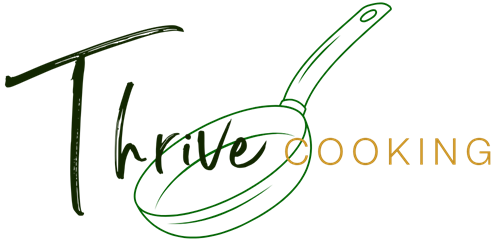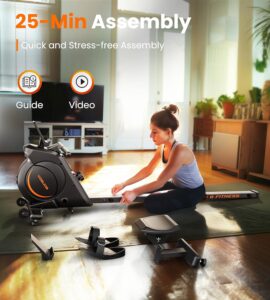I was pretty well versed in the way of fitness before I finally gave Pilates a try. I’m really not sure why it took me so long. I bumped into it on the Peloton app after I had done enough weight training to get a little bored. This was part of a fitness regimen that was involved in my previous year long journey to lose 50 pounds! (Slow is generally key in successful, long term weight loss. You also cannot neglect the psychological component. Read more about that here.) I used to tell people that pilates is sort of like fast yoga, but that’s dumbing it down way too much. Pilates involves a lot of mostly bodyweight strength training that is very much focused on core strengthening and breath work. Every move involves some kind of instruction to continue focusing on your core. You can make any move more or less intense depending on your fitness level and everything can be slowly progressed.
Pilates is a low-impact exercise geared toward strength, stability, body awareness, and a touch of flexibility. The focus is on the core muscles first with still a lot of total body strength work. It can be performed on a mat or using specialized equipment like the Reformer (a machine with springs and pulleys). If you follow me, you probably know I’m a sucker for the Peloton app. I thoroughly appreciate how they do things and although I’m pretty cheap, I think it’s well worth the $12.99/month that I currently spend on it (price as of 3/15/25). I don’t get paid to say that, I just think it’s worth the share. Youtube also has a lot of great content and I’ve attached several links later in this post.
Being a pharmacist, I’d like to indulge you in the biomechanics and physiological mechanisms underlying Pilates, which involves principles of anatomy, muscle engagement, and even neuromuscular control. I have an easier time sticking to something if I understand they reasons why I’m doing it, so maybe you’ll have success in the same way. Let’s dive into the science and biochemistry behind Pilates, as well as its impact on the body.
1. Science and Biochemistry of Pilates
Muscle Activation and Strengthening
Pilates focuses heavily on engaging the core muscles, which include the abdominals, lower back, hip flexors, and glutes. These muscles work together to provide stability to the spine and pelvis. Core strength is essential for maintaining posture and stability, which are critical for functional movement and injury prevention.
- Core Muscles in Pilates: Pilates targets deep stabilizing muscles like the transversus abdominis (the deepest abdominal muscle), multifidus (a muscle in the back), and pelvic floor muscles. These muscles are less visible than superficial muscles like the rectus abdominis (the “six-pack”), but they play a crucial role in spinal alignment and preventing back pain.
The muscle activation in Pilates is relatively low-resistance, meaning it typically uses light to moderate resistance, which can prevent joint strain and improve muscular endurance. Pilates movements emphasize eccentric muscle contractions, where muscles lengthen under tension, which is great for building muscle control and coordination.
- Eccentric Contractions: These are particularly important for developing flexibility and controlling movement. For example, exercises like the rolling like a ball or leg circles involve eccentric muscle engagement that strengthens muscles while enhancing their length and flexibility.
Muscle Hypertrophy vs. Endurance
Unlike heavy weight training, Pilates does not typically promote muscle hypertrophy (muscle growth) in the same way. However, it is excellent for developing muscular endurance, improving functional strength, and increasing neuromuscular coordination. Pilates promotes muscle tone and endurance, which is especially beneficial for overall body function, stability, and posture.
- Muscle Endurance: Pilates exercises are often performed for longer durations with minimal rest, challenging muscles to work for sustained periods. This enhances muscular endurance, helping muscles become more resilient and capable of sustaining effort for longer durations.
Neuromuscular Control and Posture
Pilates places a strong emphasis on mind-body connection and control. Exercises often require you to be aware of your posture, breathing, and muscle engagement, which improves neuromuscular control. This is the process by which your nervous system coordinates muscle contractions to produce smooth and efficient movement.
- Postural Awareness: A hallmark of Pilates is improving posture by aligning the spine and pelvis properly. Many exercises focus on spinal mobility and alignment, making it effective for preventing and alleviating lower back pain, a common issue caused by poor posture or sedentary behavior.
Flexibility and Mobility
While Pilates isn’t as focused on flexibility as, say, yoga, many movements involve stretching and lengthening muscles, which helps improve overall flexibility. For example, the swan dive and spine stretch exercises improve spinal extension and flexibility, while leg stretches in positions like the hamstring stretch enhance flexibility in the legs.
- Dynamic Stretching: Pilates involves dynamic stretching through controlled movements, which can increase range of motion (ROM) and flexibility while simultaneously improving strength. This combination of flexibility and strength training can help reduce the risk of injuries by improving joint mobility and muscle elasticity.
Breathing Mechanics
In Pilates, breathing is integrated with movement and plays a crucial role in activating muscles and maintaining fluidity. The Pilates breathing technique emphasizes lateral or ribcage breathing, where you expand the ribs outward, rather than just breathing into the chest. This type of breathing can help activate the deep core muscles and improve oxygen flow during exercise.
- The Science of Breathing in Pilates: Controlled breathing helps regulate intra-abdominal pressure, which stabilizes the spine during movement and prevents injury. It also aids in reducing stress, improving relaxation, and enhancing focus during exercises.
Energy Systems Involved
Pilates primarily engages the aerobic system due to its low-to-moderate intensity and longer duration exercises. However, when done in a more intense or circuit-like manner (e.g., Reformer Pilates or Pilates combined with cardio), the body can shift to using the anaerobic energy system, especially in movements that require bursts of effort, such as jumping exercises or resistance training with Pilates equipment.
- Aerobic Energy System: Pilates exercises can improve cardiovascular fitness over time, especially when performed as part of a continuous flow of movements or in higher-intensity sessions. This can lead to improved circulation and oxygen delivery to muscles.
- Anaerobic System: Intense Pilates exercises that involve more resistance or explosive movements (like the Jumpboard Reformer or Pilates jumps) rely on the anaerobic system, which generates energy without the need for oxygen, producing lactate as a byproduct.
2. Health Benefits of Pilates
Aside from enhancing flexibility and strength, Pilates has a wide range of physical and psychological benefits, including:
Posture and Back Pain Relief
Pilates helps align the spine and improve posture, which is essential for avoiding back pain and musculoskeletal issues. It has been shown to be effective in treating lower back pain by improving the strength of core muscles, which support the spine.
Injury Prevention
Because of its focus on low-impact, controlled movements, Pilates reduces the risk of injury, especially when compared to high-impact exercises or heavy lifting. It strengthens ligaments, tendons, and muscles in a way that enhances overall joint stability.
Breathing and Relaxation
The deep breathing exercises practiced in Pilates can help reduce stress and anxiety, leading to improved mental health. Pilates is often considered a mind-body exercise that increases mental clarity and focus.
Balance and Coordination
Pilates exercises engage the proprioceptive system, which helps you become more aware of where your body is in space. This can improve balance and coordination, particularly as you perform movements that require precision, stability, and body control.
3. Comparison with Other Exercise Methods
| Pilates | Weight Training | Yoga | Cardio (running) | |
| Core Strength | Very Strong Emphasis | Engaged but not the focus | Secondary to flexibility | Engaged but not the focus |
| Muscle Hypertrophy | Low (focuses on endurance and tone) | High (if using progressive overload) | Low (focuses on flexibility and mobility) | Low (focuses on endurance) |
| Flexibility | Moderate – High | Low | High | Low |
| Posture & Alignment | Excellent | Moderate | Excellent | Low |
| Injury Risk | Low | Moderate – High | Low | Moderate – High |
| Cardiovascular Benefit | Moderate (if done consistently) | Low | Moderate (depends on style) | High |
| Breathing Control | High | Low | High | Low |
4. Example Videos on YouTube
Here are some excellent Pilates video resources for various levels:
- Pilates for Beginners – A great introduction to basic Pilates exercises:
Watch on YouTube - Full Body Pilates Workout – A full-body routine targeting strength, flexibility, and balance:
Watch on YouTube - Pilates Reformer Workout – If you’re interested in seeing Pilates on the Reformer machine:
Watch on YouTube - Pilates for Core Strength – A workout specifically for strengthening the core:
Watch on YouTube - Pilates for Back Pain Relief – Targeted exercises to help alleviate back pain:
Watch on YouTube
Conclusion
I enjoy understanding why I’m doing something. It really helps me stay engaged and get those long term gains. I hope that by going into the scientific basis behind Pilates that it helps you in a similar way. From muscle engagement and biomechanics, to the effects on energy systems and mental health, Pilates has it all. Even more, the practice is known to reduce the risk of injury, alleviate back pain, and improve functional strength and flexibility, and improve overall body awareness. While it may not promote muscle hypertrophy like weight training, it is excellent for developing muscular endurance, improving posture, and enhancing neuromuscular coordination. I hope you’ll give it a try and I bet you’ll like it as much as I do!



